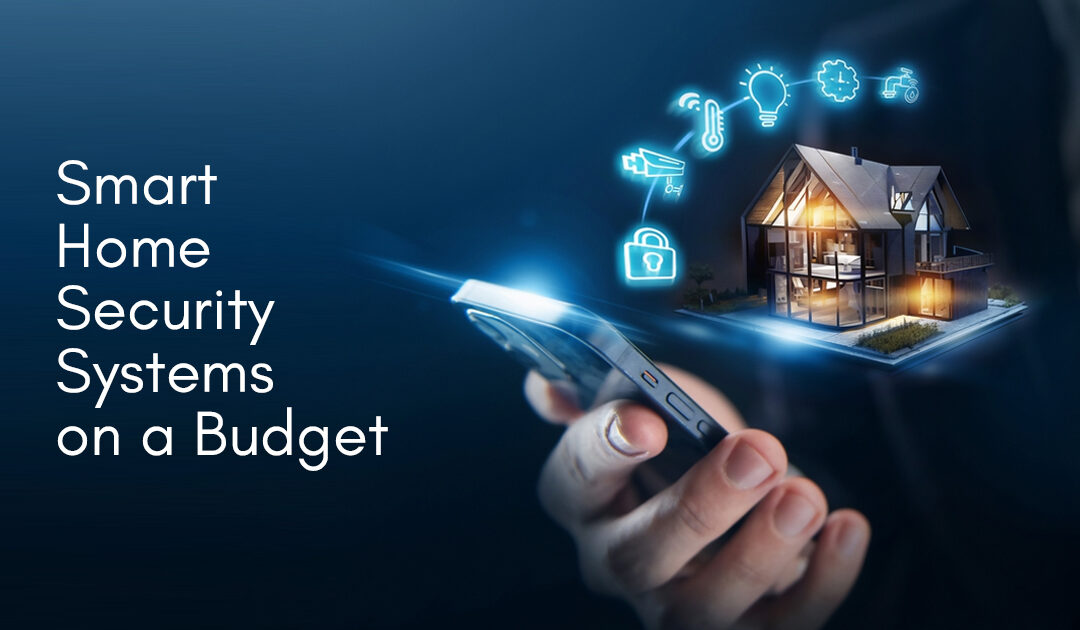Home security systems are no longer considered a luxury for the wealthy. Technological advancements have cleared the way for a wave of low-cost smart home security solutions, allowing everyone to create a safer living environment. Whether you rent a studio apartment or own a large estate, there are low-cost ways to repel intruders, receive real-time notifications, and enjoy peace of mind.
Why smart home security?
Smart home security has various benefits:
- Affordability: Many smart home security gadgets are offered at affordable prices. You can also avoid the expensive installation expenses associated with typical systems by choosing DIY solutions.
- Convenience: Smart home security systems are designed to be user-friendly. Control your system remotely from your smartphone or tablet, receive real-time alerts, and automate security features for seamless peace of mind.
- Smart Integrations: Modern smart home security systems work smoothly with other smart home devices like smart lights and thermostats. This enables you to develop automated processes that improve both security and usability.
Now that we’ve established the advantages of smart home security on a budget, let’s look at the key components you may add into your system:
- Smart Door and Window Sensors: A smart home security system relies on smart door and window sensors as its primary components. They detect unwanted entrances by feeling the unexpected opening or closing of a door or window. Many sensors are wireless and can be easily installed using sticky tape or screws.
- Smart Motion Sensors: Smart Motion Sensors detect activity in a specific area, sending alarms and perhaps deterring attackers. Motion sensors are very effective for monitoring large common spaces and hallways.
- Smart Video Doorbells: Replace your regular doorbell with a smart video doorbell to check who is at the door before answering. Many models include two-way audio communication, which allows you to converse with visitors remotely.
- Smart security cameras: Indoor and outdoor smart security cameras add an extra layer of security by visually monitoring your property. Many cameras have night vision, motion detection, and two-way audio communication capabilities.
- Smart home hub: A smart home hub serves as the brain of your home security system, allowing you to connect and operate all of your devices from a single platform. Some smart home devices, on the other hand, can function without a central hub.
Here are some methods to start your budget-friendly smart home security journey:
- Start Small: Don’t feel obligated to furnish the entire home at once. Begin with basic components such as door and window sensors and a smart hub, then add features as your budget allows.
- Shop around: Prior to making a purchase, compare pricing from numerous merchants and online marketplaces. Consider reconditioned products or bargains and promotions.
- Look for Bundles: Many smart home firms provide starting packages that include necessary components at a reduced cost.
- Consider DIY Kits: Some companies provide self-monitoring systems, which eliminate the need for monthly monitoring payments.
- Use Free Trials: Some firms provide free trials to test out features before committing.
Some important reminders:
- Security Signs: Although not a high-tech option, displaying visible security system signs can serve as a deterrent to potential invaders.
- Strong Passwords: To prevent unwanted access to your smart home devices, use strong and unique passwords for each.
- Regular System Checks: Test your system’s sensors, cameras, and alarms on a regular basis to ensure they are all functioning properly.
Building a smart home security system on a limited budget does not have to be a difficult undertaking. By intelligently selecting low-cost devices and utilizing the power of DIY installation, you can build a strong system that deters intruders, delivers real-time alerts, and provides peace of mind. Remember that even a simple system with a few key components can dramatically improve your home’s security.
Share this on:


